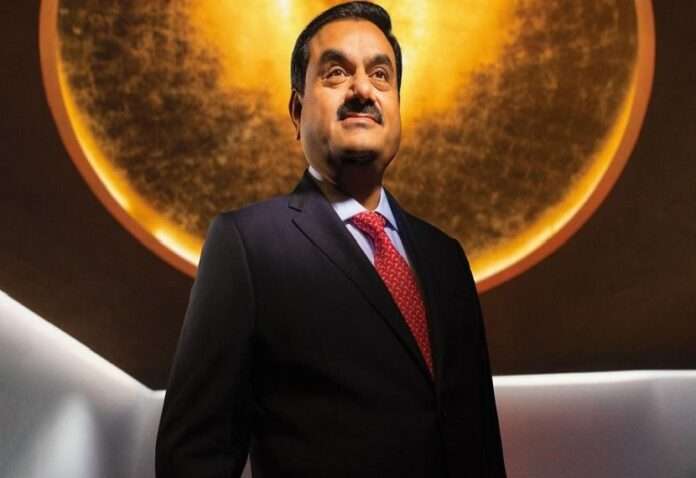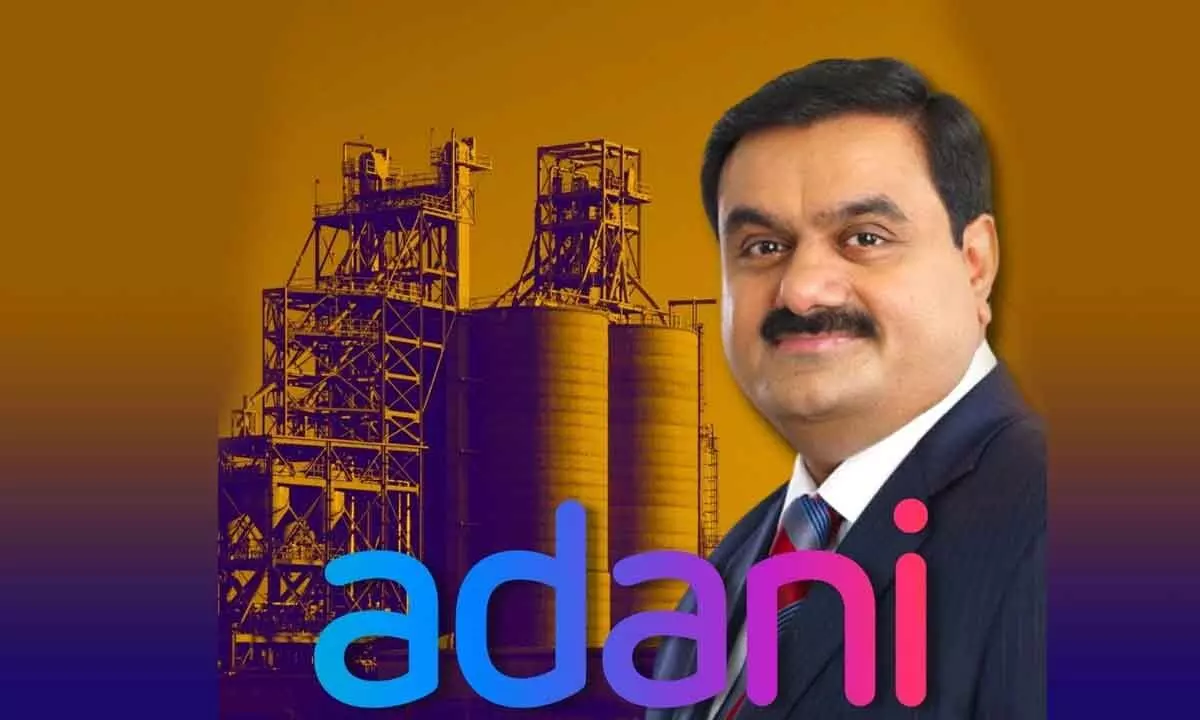Gautam Adani, The Man Whose Wealth ‘Almost’ Perished In 2023 Rises To Become Asia’s Richest Person Again, Courting Controversies, Adani Group Back On Track With Renewed Expansion Spree, Why Is Adani Such A Tough Cookie?

2023 had been one of the most challenging for Adani Group’s Gautam Adani; following the accusations by the Hindenburg report, his vast empire took a notable hit, and his substantial wealth quickly declined.
Fast-forward one year, and Adani, the chairman of Adani Group, has recovered his glory—and how—he has reclaimed the title of Asia’s richest person, surpassing Reliance Industries chairman Mukesh Ambani, according to the Bloomberg Billionaires Index.
As of 6 PM on Saturday, Adani holds the 11th spot on the index with a net worth of $111 billion, compared to Ambani’s $109 billion.
This was despite the latest report by OCCRP on selling substandard coal at high prices, but it wasn’t enough to put a dent in his empire or his wealth, as the markets/investors took little notice, leading to a significant rise in Adani Group stocks. This has been a key factor in Adani’s overtaking of Ambani.
 High On Jefferies Report
High On Jefferies Report
On Friday, Adani Group shares soared after a Jefferies report highlighted the Group’s ambitious expansion plans, including $90 billion in capital expenditures over the next decade.
The market responded positively, with Adani Group stocks increasing investor wealth by up to ₹1.23 lakh crore, pushing their total market capitalization to ₹17.94 lakh crore intraday. By the end of trading, the market capitalization settled at ₹17.51 lakh crore, marking an addition of ₹84,064 crore in value.
The Adani Group saw an impressive 40 per cent EBITDA growth (year-on-year) in the financial year 2023-2024 (FY24), after a short-seller report hit its market capitalisation in late FY23, a Jefferies report has shown.
During FY24, the Adani Group’s EBITDA grew to Rs 660 billion, with more than doubling of Adani Power’s EBITDA on capacity addition, higher volumes, merchant contribution and lower imported coal prices.
“The group is back on an expansion spree and eyeing USD 90 billion capex over next decade,” said investment bank and financial services firm Jefferies in a report, as it forecasts a road ahead for the Group.
Jefferies’ report noted that the net debt at the group level (eight Companies plus the debt related to cement business acquisition) remained stable at Rs 2.2 trillion in 2023-24 versus Rs 2.3 trillion.
The Jefferies report also highlighted key developments at the Group level, such as the commissioning of the Ingot wafer unit.
Adani Cement completed the Sanghi Cement acquisition; Adani Ports acquired Gopalpur port in Odisha; Adani Power commissioned a 1.6 GW Godda power plant; Adani Green added 2.8 GW renewable energy capacity; commenced operations for its 775 megawatt solar power projects in Khavda, Gujarat.
Further, Adani Energy Solutions had 1,244 ckm (Circuit kilometer) of transmission lines; Adani Total Gas added 91 CNG stations, and 116,000 domestic PNG customers during the year.
Adani Wilmar’s food and FMCG business scaled to 1 million tonnes in volumes and Rs 50 billion in turnover with improving margins.

It said flagship company Adani Enterprises is scaling its captive manufacturing capacity towards starting Green Hydrogen production by 2026-27; Navi Mumbai Airport appears likely to commission by the fourth quarter of the current financial year 2024-25; data centre projects are also scaling up.
Adani Cement management, it says, continues to guide the doubling of cement capacity and scale-up in unit EBITDA to industry-leading Rs 1450-1500 per tonne by 2027-28.
Adani Ports recently published its five-year business road map, targeting an 18 per cent EBITDA compound annual growth rate in 2023-24-2028-29.
“Ports EBITDA is expected to rise at 16 per cent CAGR led by expansion and ramp-up with the company targeting 1 billion tonne cargo volume by 2030 (15 per cent CAGR),” Jefferies report noted.
Adani Green raised its 2030 power capacity target from 45 GW to 50 GW now including 5GW pumped hydro.
Adani Total Gas plans to grow new business segments including the LNG station network for the transport and mining sector and EV charging facilities.
The investment bank’s report noted that Adani Wilmar is focused on distribution expansion, ramping alternate channels and improving the mix of premium brands.
Jefferies has given a ‘buy’ call for Adani Enterprises with a target price of Rs 3,800, Adani Ports and Special Economic Zone Ltd at Rs 1,640, Adani Energy Solutions at Rs 1,365, and Ambuja Cements at Rs 735, respectively.
This surge contrasts sharply with events in 2023 when the Supreme Court ordered a panel to investigate allegations from the Hindenburg report. Adani, who was the third richest person in the world before the report, saw his ranking plummet as the Group’s shares sold off.
Later, the Supreme Court instructed the Securities and Exchanges Board of India (Sebi) to conclude its investigation into the Adani Group, stating no further probes were necessary. Sebi reported it could not reach a conclusion in its investigation.
Last week, Adani expressed optimism about the Group’s future, saying, “The road ahead is paved with extraordinary possibilities, and I can promise you that the Adani Group today is stronger than it has ever been,” according to NDTV.
 A Tough Cookie To Crack
A Tough Cookie To Crack
Gautam Adani stands out as a unique figure among Indian tycoons. The 62-year-old university dropout and son of a trader has swiftly become the world’s wealthiest individual by rapidly building and acquiring critical energy and infrastructure assets.
Unlike many of his counterparts, Adani has avoided conspicuous financial recklessness that led to the downfall of other tycoons in recent years.
However, certain concerns loom over the billionaire, hinting that his conglomerate might be growing too large to be without risk.
Over the past three years, the combined market value of the Adani Group’s seven publicly traded companies, all bearing the industrialist’s name, has surged tenfold.
Gautam Adani, chairman, leads the conglomerate, which is reinforced by his family members, including his wife, brother, two sons, and several nephews, who hold substantial equity stakes of up to 75%.
Fuelled by both organic growth and strategic acquisitions, the Group has emerged as the nation’s second-largest cement manufacturer and operator of seven airports, mostly acquired through government privatizations since 2019.
Adani’s existing dominance in ports and power transmission has been further augmented by significant purchases, including a substantial acquisition from SoftBank Group, establishing the conglomerate’s stronghold in renewable energy assets.
However, amidst India’s industrial scene, characterized by financial challenges many business groups face, Adani stands out as a relentless borrower.
 And even while others struggled under mounting debts, Adani’s Group has managed to deleverage, with aggregate net debt decreasing despite a significant increase in borrowing across listed companies over the past decade.
And even while others struggled under mounting debts, Adani’s Group has managed to deleverage, with aggregate net debt decreasing despite a significant increase in borrowing across listed companies over the past decade.
The diversification of funding sources and elongated repayment schedules have worked in favour of the Group, supporting its financial stability. A substantial portion of the debt is structured in capital-market instruments, extending repayments well into the future.
Credit rating agencies perceive minimal weaknesses in most group businesses, which are primarily focused on cash-generating assets. Bidding strategies for contracts or acquisitions are deemed moderate rather than aggressive.
Despite Adani’s efforts to court debt investors and attract foreign capital, the conglomerate’s appeal faces certain limitations. Eye-watering valuations and concerns about opaque financial structures temper investor enthusiasm, notwithstanding the significant backing from strategic equity partners.
While Adani continues to tackle these challenges, his conglomerate’s expanding influence raises questions about its sustainability and potential implications for India’s economy.
Many top Indian and Wall Street institutions maintain a cautious distance from Adani due in part to the staggering valuations of his conglomerate’s largest companies.
According to Refinitiv data, Adani’s four leading firms trade at remarkably high multiples compared to industry peers. Additionally, Adani’s close ties to the government, akin to Ambani, stem from his roots in Prime Minister Narendra Modi’s home state of Gujarat, renowned for producing astute businessmen.
Both Adani and Ambani have aligned their business ambitions with India’s infrastructure and energy needs, presenting a formidable challenge in steering potential political shifts.
Despite operating across states governed by various parties and coalitions, Adani’s proximity to the government adds a layer of scrutiny, unlike Ambani’s Reliance, which has established credibility over several decades.
Analysts and money managers have voiced significant concerns about the perceived inflation of value within Adani’s closely held companies through opaque Mauritius-based funds; this opacity raises questions about the conglomerate’s true financial health and stability.
Following a sharp decline in group stocks prompted by the Hindenburg report in 2023, Adani found himself under the lens of the securities regulator. However, such probes, often lacking transparency, can linger for years before fading into obscurity, as evidenced by the recent issuance of a ‘clean’ chit.
Despite Adani’s assurances of regulatory compliance, lingering reputational concerns could impede his ability to attract external support if faced with leverage or capital access challenges.
As Adani’s ventures penetrate deeper into the economy, potential repercussions could reverberate in New Delhi and beyond as his success holds significance for affluent nations relying on him to spearhead ambitious projects aimed at fulfilling India’s climate commitments.
While India clamours for financially prudent infrastructure magnates, the relentless ascent of Adani, despite investor apprehension, remains unstoppable for now!




